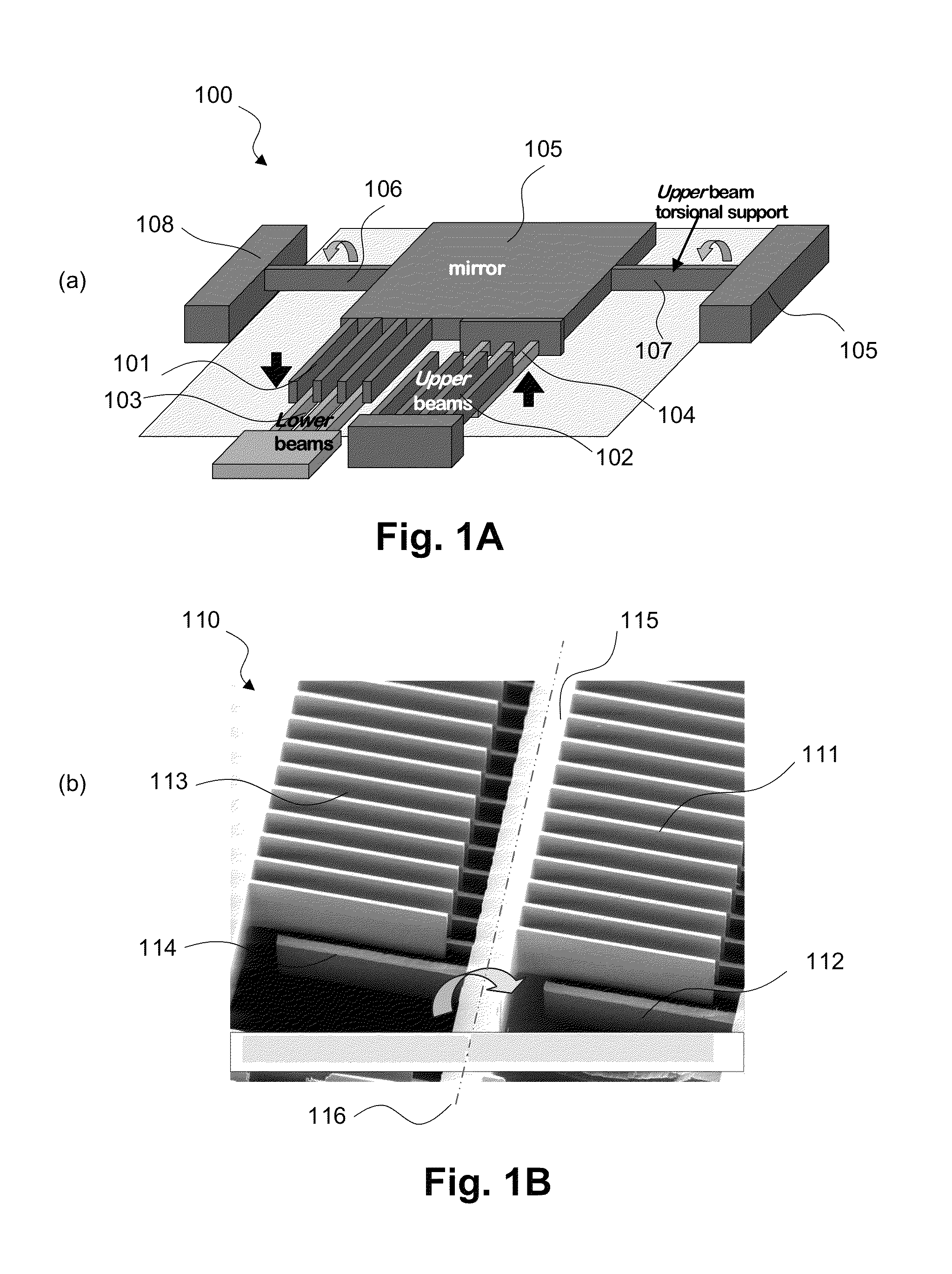MEMS actuators with combined force and bi-directional rotation
a technology of combined force and actuator, applied in the field of microelectromechanicalsystem (mems) one-dimensional (tilt) rotation actuator, can solve the problems of increasing complexity and cost, complex fabrication, and increasing the number of cmp steps
- Summary
- Abstract
- Description
- Claims
- Application Information
AI Technical Summary
Benefits of technology
Problems solved by technology
Method used
Image
Examples
Embodiment Construction
[0041]The rotator as illustrated in FIG. 7 has Upper comb fingers illustrated in dark gray (702&704) at a higher out of plane position than Lower comb fingers illustrated by light gray (703&705). Controlling the rotator voltage V0 (connected to anchor 706& stage 708) and fixed combs' voltage V1 (connected to electrode 707), exerts electrostatic forces between comb fingers 702 and 703 and between comb fingers 704 and 705 that tends to move drive beam 710 and load 701 up (out of plane of the schematic) from its resting neutral position. Only rotation in this ‘up’ direction is possible with this arrangement in a quasi-static sense (due to applied voltage.) Rotator 708 is tethered to anchors 706 via torsion springs 709 which allows the rotator to rotate along axis-1, but constrains the rotator from lateral or vertical translation and rotation in all other directions. This was shown in the cross-sectional schematic of a vertical combdrive actuator 610 in FIG. 6A. The same torsion springs...
PUM
 Login to View More
Login to View More Abstract
Description
Claims
Application Information
 Login to View More
Login to View More - R&D
- Intellectual Property
- Life Sciences
- Materials
- Tech Scout
- Unparalleled Data Quality
- Higher Quality Content
- 60% Fewer Hallucinations
Browse by: Latest US Patents, China's latest patents, Technical Efficacy Thesaurus, Application Domain, Technology Topic, Popular Technical Reports.
© 2025 PatSnap. All rights reserved.Legal|Privacy policy|Modern Slavery Act Transparency Statement|Sitemap|About US| Contact US: help@patsnap.com



